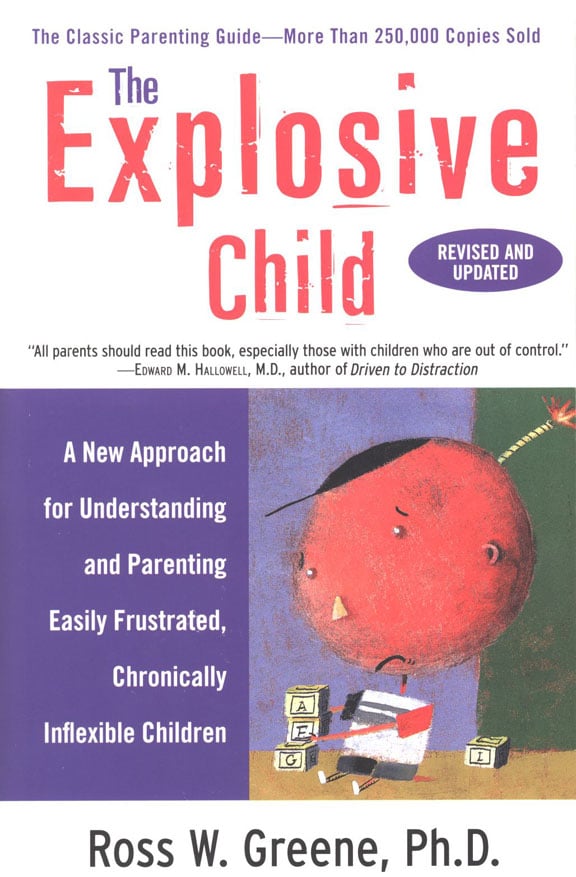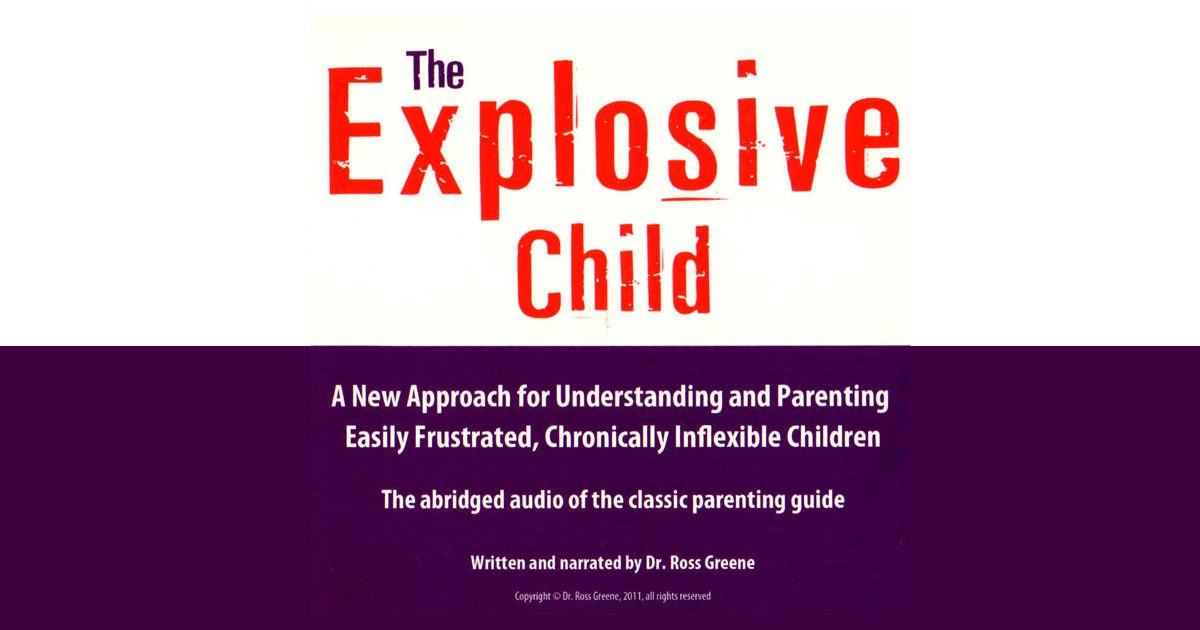
Behavioural challenges, whether at home or at school, are one of the most common reasons parents consult with the physicians and therapists at the Possibilities Clinic. Although not a substitute for seeing a therapist, the book “The Explosive Child” by Dr. Ross Greene, Ph.D. contains suggestions parents can put into action immediately.
From the outside, the child who reacts to a simple request with a tantrum might seem defiant, badly behaved. While traditional wisdom might tell parents to get firm, set boundaries, or give kids rewards and consequences to change their behaviour, Dr. Ross W. Greene Ph.D. pushes back on these notions. In his book “The Explosive Child” he offers his thoughtful proposition: kids do well if they can.
Imagine for a moment that the same child had a learning disability instead of challenging behaviour. Would boundaries and consequences help them learn to spell or do long division? On a cognitive level, kids with behavioural challenges lack skills like frustration tolerance, adaptivity and problem solving. Dr Greene explains that kids would prefer to handle themselves in more adaptive ways, but sometimes don’t simply because they lack the skills to. He shows parents how to work through behavioural challenges with their kids through what he calls Collaborative Problem Solving (CPS).
By working through Dr. Greene’s research-supported method, challenging behaviour can become highly predictable and manageable. We’ve read “The Explosive Child” and will outline 7 of Dr. Greene’s pearls of wisdom that we believe can reshape the way that parents and their children approach basic daily challenges.
1. Identify Lagging Skills and Unsolved Problems
Quite sensibly, Dr. Greene suggests that parents start off by identifying the challenges their children are having. “Lagging skills” are the those which make it difficult for kids to adapt to life’s daily challenges on a cognitive level. By identifying when the child is having difficulty can help the parent begin to understanding why.
2. Getting Off on the Right Foot: Reframing “Problems” for Success
After identifying when challenging behaviours seem to occur, a new picture of the problem can start to emerge. Dr. Greene pushes parents to get to the meat of problems, framing them in a way that will increase the likelihood of eliciting the child’s participation. For example, trying to deal with “difficulty making transitions” rather than “screaming and crying when asked to come inside and finish her homework” can be a gamechanger.
3. Walking in the Right Direction: The Empathy Step
In traditional approaches where decision making is unilateral, temper outbursts are actually guaranteed. Instead, Dr. Greene’s method is proactive and humane. In this approach, the first step is the empathy step, where parents gather information and understanding of their child’s problem. Taking a genuine, non-judgemental stance helps to gel parents and children as collaborators, rather than adversaries.
4. Strides Towards Change: the Invitation Step
After each sharing their concerns about the problem in question, the invitation step is where the parent and child brainstorm to find a solution. The idea here is that both the parent and child will have concerns (“I don’t want to do my homework right now”, “Yes, I can see that but I’m concerned that if we don’t do it now, we won’t have time later”). This is where the collaboration happens. Working together, you try to find a realistic and mutually satisfactory solution. This might not happen on the first try! The key is to keep working through these challenges together.
5. What’s the Catch?
At first blush, this collaborative approach can look a bit like “giving in” to bad behaviour or relinquishing parental authority, but Dr. Greene argues that it isn’t really about that. It’s about proactively dealing with problems which just aren’t getting resolved through more traditional avenues. This problem focused approach is grounded in years of research with behaviourally challenging children. It takes practice but it’s worth the work!
6. Family Matters
A practical plan for addressing challenging child behaviour would not be complete without acknowledging the impact it’s having on the child’s family. Often the parents, siblings, even grandparents will have to adapt as these new strategies are introduced. If they’re old enough to understand, Dr. Greene suggests that parents explain to brothers and sisters why their behaviourally challenging sibling is acts the way they do. Remember, being fair is not the same as being equal. Some children may need more help in certain areas than their siblings.
School’s In
Lots of children with behavioural challenges won’t show them at school. But for some, parents and teachers will need to work together to resolve the child’s behavioural challenges. Dr. Greene is quick to point out that schools may be strained for time and financial resources, but also underscores that parents tend to take on more blame than their due for their kids’ behaviour. In keeping with the theme of the book, the key here is collaboration, between the teacher, the student, other classmates, and parents.
While seeing a therapist and obtaining medical treatment is always something we highly recommend when dealing with behavioural issues, some of these steps really can help. Still not completely sold? Consider this final piece of advice from Dr. Greene that sticks with us: you’re trying it because you’ve tried everything else.
We recommend “The Explosive Child” for parents, educators and anyone who might wish to learn more about how to interact more effectively with a behaviourally challenging child.
For more information on Dr. Greene’s method and the book, visit www.livesinthebalance.org.











